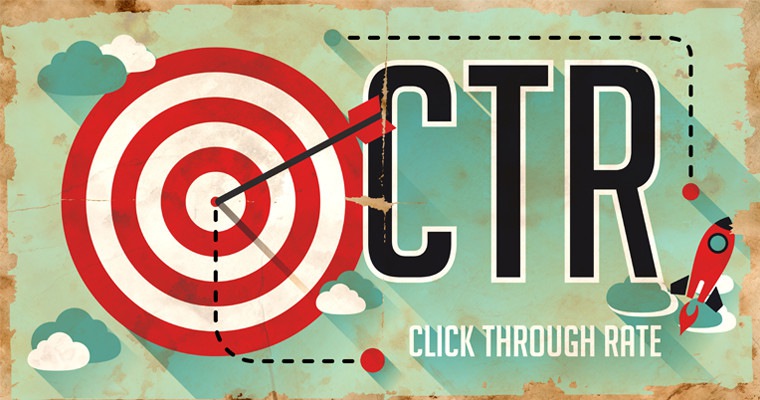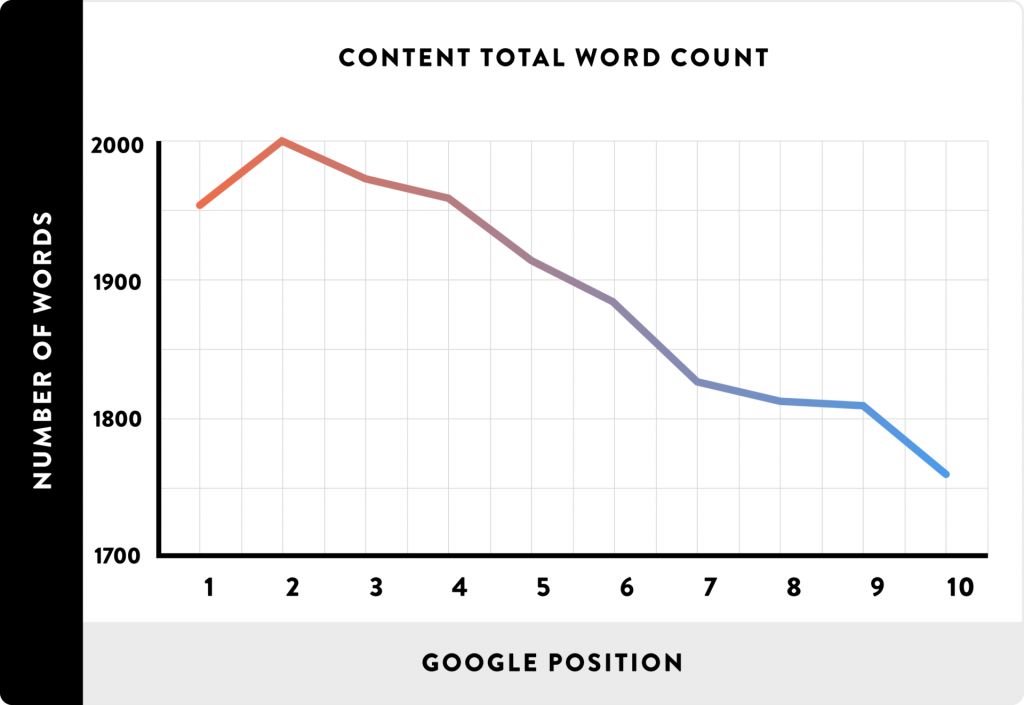Don’t you just hate it when you spend hours (if not days) writing and perfecting a blog post, only to come to the conclusion that the post you worked on for so long is nowhere to be found in the Google search engines?
Trust me, I’ve been there too..
And that’s a shame, because even though you never know in advance if Google is going to love or hate your post, there’s quite a few things you can do to increase the odds in order to improve your Google Ranking.
Even a few basic optimisations could potentially boost your traffic, and that’s exactly what I will show you in this post.
Use these SEO Tips for 2018 as a way to improve your older (existing) posts and keep them in the back of your mind when developing new content. Oh and we have a little surprise for everyone who makes it until the end of this post.
SEO Tips 2018
What is Google Ranking?
With “Google Ranking” I am referring to all the factors that influence the way your content or page will rank in the Google search results. There are a few factors that are more important than others and there are some that might require a tweak to your website code.
The list of all the factors that influence your ranking is pretty huge and there’s really no point in explaining them all. That’s why in this post we will only focus on on-page optimisations that you can do RIGHT NOW and do not require any technical changes to your website.
(For those who are interested, here’s an overview of all Search Engine Ranking Factors).
Let’s dive in…
SEO tip 1 – Keyword Research, Keyword Research, Keyword Research, …
Yes I know, you probably heard it before but we, as SEO’ers, can’t stress the importance of keyword research enough.
The thing is, it sounds way more complicated than it is and that scares most people. I guarantee you that with 5 minutes of keyword research, and following the rest of the tips on this list, your rankings will increase. Period.
And sure there’s a ton of ways you can go about doing keyword research. If you don’t want to spend any money on some fancy software, there’s still quite a few things you can do, for absolutely free. Let me explain….
Even though there are some great 3rd party tools available, the best tool, in my opinion, to do some quick keyword research, is Google itself. Example:
Let’s assume I want to write a blog post on how you can increase your Google Ranking. First of all I’d like to know what people are searching for themselves. Google auto-suggest at your service…
 This gives me an instant idea what people are searching for in regards to “Google Ranking”. These results, also known as long-tail keywords, are based on queries that are extremely relevant to your initial search request (but you probably already figured that one out ?).
This gives me an instant idea what people are searching for in regards to “Google Ranking”. These results, also known as long-tail keywords, are based on queries that are extremely relevant to your initial search request (but you probably already figured that one out ?).
But it gets better; next to this list with relevant keywords, you can find even more suggestions at the bottom of your search result page.
 These results are based on the principle of “Latent Semantic Indexing”. With this combination of long-tail and LSI keywords I already have a pretty good idea what people are searching before writing this blog post. Next to that it’s also a good way to get some content inspiration because Google basically gives you some topic ideas to write about.
These results are based on the principle of “Latent Semantic Indexing”. With this combination of long-tail and LSI keywords I already have a pretty good idea what people are searching before writing this blog post. Next to that it’s also a good way to get some content inspiration because Google basically gives you some topic ideas to write about.
Of course it’s only appropriate to use the keywords that are relevant to what you want to write about. The (3 to 5) keywords you end up with can now be used throughout your text, titles and even as alt-text on your images (more on this later).
Good to know: The Google algorithm has become smarter and smarter over the years, this means that you don’t have to use every keyword exactly the way Google provides it. For example they recognize keywords as “Improve Google Ranking” and “Improve your Google Ranking” as being the same.
One last tip: don’t overdo it… At the end of the day you are writing for people and not for search engines. Use your keywords with moderation. In the on-page SEO tips that follow I will show you how you can efficiently use the keywords you selected.
SEO tip 2 – Optimize Your Titles
The title is without a doubt the most important SEO ranking factor on your page. That’s why it’s important to use the proper keyword (the one you want to be found for) within your title. And better yet as close to the beginning of your title as possible. That’s because more ‘weight’ is assigned to the first words in a title.
For example; let’s say we want to rank for “Keyword Research 2018”.
Good, but not great: “What are the best practices for keyword research in 2018”
Much better: “Keyword Research 2018 – Best Practices”
SEO tip 3 – Use Appropriate Adverbs In Your Title!
 Believe it or not, but the use of adverbs could give your Google Ranking just the boost it needs. That’s because a big share of all searches contain a certain adverb ( -> long-tail keywords). For example: “2018”, “Best”, “Review”, “Guide”, “Checklist”
Believe it or not, but the use of adverbs could give your Google Ranking just the boost it needs. That’s because a big share of all searches contain a certain adverb ( -> long-tail keywords). For example: “2018”, “Best”, “Review”, “Guide”, “Checklist”
This does not only influence your position in the search results, but also the Click-Through-Rate of your blog, as your title will now look more appealing.
SEO tip 4 – Optimize Your Head & Subtitles (H1, H2, H3, …)
 The H1 is your main header (not to be confused with the actual title of the page, although these can sometimes overlap). Needless to say that it’s also important to use your most important keyword in your H1.
The H1 is your main header (not to be confused with the actual title of the page, although these can sometimes overlap). Needless to say that it’s also important to use your most important keyword in your H1.
Same goes for all subtitles that follow (H2, H3, …). These subtitles can be used to use the keywords we selected during our initial keyword research.
Attention: Only use a single H1 per page!
SEO tip 5 – Your Most Important Keyword In The Intro Of Your Post
Use your keyword within the first 100-150 words of your blog. Even though this is probably something you would do automatically, it’s still an important rule of thumb.
SEO tip 6 – SEO Friendly URLs = Better Google Ranking
A while ago Google announced that more “weight” (read: attention) is given to the first 3 to 5 words in a URL. That’s why it’s important to keep your URLs short and powerful. And you probably know what I’m going to say next… Exactly, use your most important keyword in the URL! ?
TIP
Avoid non-saying URLs like this: humix.be/blog/35469/
Avoid long URLs like this: humix.be/blog/in-this-blog-we-will-talk-about-search-engine-optimization-improve-your-google-ranking-now
SEO tip 7 – Use Media
 A page with just text is boring, use media whenever possible. Not only does this make your blog post look less monotone, it will also provide more structure. Better yet, it will ensure that people will stay longer on your page (time on page) and that they won’t quickly leave your website (bounce rate).
A page with just text is boring, use media whenever possible. Not only does this make your blog post look less monotone, it will also provide more structure. Better yet, it will ensure that people will stay longer on your page (time on page) and that they won’t quickly leave your website (bounce rate).
Time on page (preferably as high as possible) and bounce rate (preferably as low as possible, although I do admit that this is not always true) are two ranking factors that Google takes in high regard!
When using images, make sure that they are accompanied by relevant ALT text. Google is getting smarter and smarter, but when it comes to interpreting images, there not there quite yet. That’s why it is our jobs to provide each image with an appropriate and descriptive (but relevant!) alt text. Which is also a good opportunity to use our keywords.
SEO tip 8 – Use External Links To Relevant Pages
There’s a reason why I link to other websites throughout this blog. There’s the obvious one; it is beneficial for the reader who wants to know more about a certain topic, but also gives an indication of the quality of your content.
But there is also a less obvious one; external (outbound) links to pages that are relevant to the topic of your page helps Google to “understand” your page much faster. It wouldn’t be an SEO tip if it wasn’t a ranking factor, would it ?.
SEO tip 9 – Internal Link Building
It is advised to use 2 to 3 internal links throughout your blog. (An internal link is a link to a page within your own website). This could be to a blog post that handles a certain topic more in-depth, a contact page, service page, product page, …
SEO tip 10 – Page Speed Is Important!
Google wants to provide their users with a seamless browsing experience. If a page takes about 10 seconds to load, that’s not a great user experience, is it? Well, most of us don’t even want to wait more than 5 seconds for a page to load. That’s why an important rule of thumb is that a page shouldn’t take longer than 3 to 4 seconds to load. Unfortunately, that’s easier said than done. Because how the hell do you improve the speed of a page?
The not so obvious ways:
- Use a content delivery network
- Upgrade to a faster hosting provider. (These are usually a bit more expensive, but definitely worth it when you are seeing more and more users find their way to your website).
The free way:
- Compress images
- This can be done either manually, or if you use WordPress as a CMS, there are some great plugins who do this with a click of a button.
Want to know how fast your website is compared to others on the web? Do the test here.
SEO tip 11 – Use Social Share Buttons
Even though “shares” and “likes” do not directly affect the Google Ranking of your website, it is a great way to reach a bigger audience. A bigger audience equals more chance in acquiring those awesome backlinks that we all crave so badly. This means that ‘social signals’ definitely influence your ranking, indirectly that is. (Click here to learn more about link building).
 And last but definitely not least…
And last but definitely not least…
SEO tip 12 – Content, Content, Content, …
 A study on 1 million Google search results has shown that long(er) blog posts & articles have a bigger chance to rank higher in Google search results. As this graph shows us, 1900 to 2000 words should be the optimal length for an in-depth blog post. This is, depending on the subject, not always feasible (unless your name is J.K. Rowling). Nonetheless, try to aim for 1000+ words per blog post.
A study on 1 million Google search results has shown that long(er) blog posts & articles have a bigger chance to rank higher in Google search results. As this graph shows us, 1900 to 2000 words should be the optimal length for an in-depth blog post. This is, depending on the subject, not always feasible (unless your name is J.K. Rowling). Nonetheless, try to aim for 1000+ words per blog post.
It’s common sense really; the more text you have, the more keywords you can rank for…You see, SEO does not have to be that complicated!
Conclusion
With these hands-on SEO tips you can immediately start to lift your next blog post to unseen heights. (Alright that might be a bit too optimistic, but I promise you it will positively influence your rankings ?).
Bonus: Google Rank Checker – The Best Search Engine Ranking Tool – 14 Day Free Trial
If you’ve made it to the end of this blog post, then we have a little surprise for you…
SEMrush, one of the worlds most popular rank tracker and keyword research tools out there allowed us to give away 14 day trials for absolutely FREE! For 14 days you will be able to the the following things without paying a single penny:
- High Level Keyword Research (with Keyword Difficulty Indicator, to get an instant idea how competitive a certain keyword is).
- Competitor Analysis (See how you rank against your competitors for certain keywords and how much traffic they receive)
- Extensive SEO Analyses
- If your competitor is using Adwords, this tool will find every single keyword they are targeting, including the ad text they use (Title & description) and even an estimate of what they pay per click.
- Etc…
Try it out for free right now:


